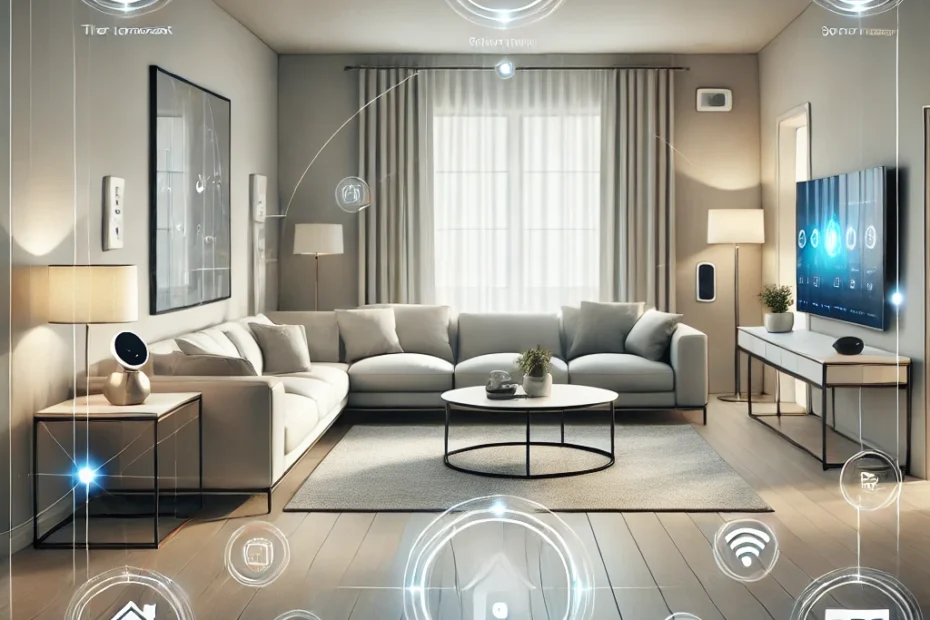The future of home living is here,and it’s known as smart home technology. With the ability to control your lighting through voice commands and automate your home’s security, smart homes utilize Internet of Things (IoT) devices to enhance convenience, security, and energy efficiency. Whether you’re new to the idea or simply interested in learning more, this guide will clarify what a smart home is, how it operates, and the ways in which incorporating smart technology can change your everyday life.
Key Smart Home Components:
- Smart Lights – Adjust brightness, color, or schedule lighting to save energy or set a mood.
- Smart Thermostats – Automatically regulate temperature for comfort and energy savings.
- Smart Security Systems – Monitor your home with smart locks, cameras, and motion detectors.
- Smart Appliances – Control kitchen gadgets like ovens, fridges, and dishwashers remotely.
- Smart Speakers and Voice Assistants – Control your devices hands-free with systems like Amazon Alexa, Google Assistant, or Apple Siri.
How Does a Smart Home Work?
Smart home devices are often connected via Wi-Fi or Bluetooth and are typically controlled by a central hub, such as Google Nest or Apple HomeKit. A hub acts as the central point in a smart home system, coordinating communication between various devices, even if they use different protocols like Wi-Fi, Zigbee, or Z-Wave. It serves as a bridge, ensuring that all devices—such as lights, thermostats, and security systems—can communicate with each other and be managed through a single platform or app. This setup enables automation of tasks like turning off lights, adjusting the thermostat, or locking doors. Protocols like Zigbee and Z-Wave allow devices to connect without relying on Wi-Fi, reducing network strain and improving reliability.
- Smart thermostats learn your preferences and adjust heating and cooling based on your routine.
- Smart locks allow you to lock/unlock doors from your phone and send alerts if someone tries to break in.
- Smart lights can be set to turn on when you walk into a room and turn off when you leave.
Benefits of Smart Home Technology:
- Convenience: Control devices remotely or with voice commands.
- Remote control: Adjust appliances from anywhere in the world with an app.
- Voice commands: No need to manually press switches; just tell your voice assistant to handle things.
- Personalization: Tailor your home environment based on your schedule and preferences.
- Energy Efficiency: Reduce energy bills with smart thermostats, lighting, and appliances.
- Security: Real-time alerts, remote access, and advanced monitoring systems.
- Smart locks: Check door status and grant remote access.
- Smart cameras/doorbells: Provide live video and motion detection.
- Sensors: Alert you to unusual activity on windows and doors.
- Accessibility: Easier control for seniors or those with disabilities.
How to Set Up a Smart Home
- Start Small: Begin with one or two devices like smart lights or a thermostat.
- Choose a Hub: Use systems like Amazon Echo, Google Nest, or Apple HomeKit.
- Ensure Compatibility: Check device compatibility with your hub.
- Automate: Use apps like IFTTT (If This, Then That) to create rules and routines, such as turning off the lights when you leave the house or adjusting the thermostat when you go to bed.
This comprehensive guide serves as an introduction to the world of smart homes, providing a roadmap for homeowners to start their smart home journey. From understanding how these systems work to experiencing the benefits, smart home technology is a worthwhile investment that enhances your home environment and day-to-day convenience. A step to step guide is provided in another blog article.
